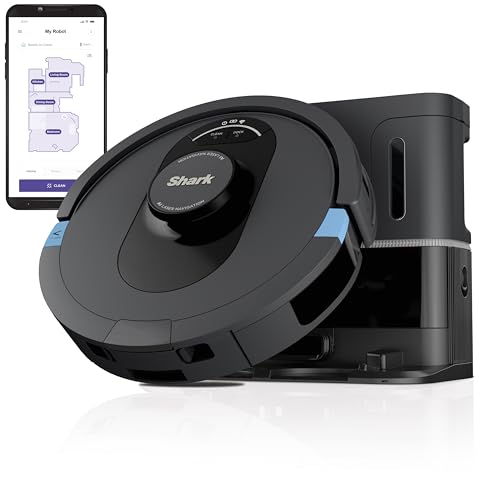
Robot Vacuum Mops
Add a review FollowOverview
-
Founded Date May 22, 1957
-
Sectors Education Training
-
Posted Jobs 0
-
Viewed 97
Company Description
12 Facts About Robot Vacuum And Mops To Refresh Your Eyes At The Cooler Water Cooler
Robot Vacuum and Mop – Hands-Free Cleaning Made Easy
Think about this two-in-one cleaner if you’re looking for one that can do it all. It can mop hard floors and vacuums low- and medium-pile carpet, and its app lets you create areas that are not mopped and alter cleaning schedules and modes.
Look for models that can determine the kind of flooring they’re on, remove their own dirt and water tanks and avoid obstacles like phone chargers, socks and pet hair. Find out how easy it can be installed.
Self-Emptying
As the world gets busier and more hectic, people are always trying to find ways to cut down their workload. Robot vacuums and mop are among the top tools on the market to help with that. They can remove pet hair, dirt, and crumbs while simultaneously cleaning floors. You can even use a smartphone or a voice assistant to control them using pre-programmed schedules and specific room designations.
One of the best time-savers for both users and machines are self-emptying models that don’t require you to empty out the trash bin after each cleaning cycle. This can save you a lot of effort and lets your robot clean your entire house more often, without having to be concerned about running out of space in the bin before it’s time to get refills.
If you’re thinking about self-emptying models be sure that the external dustbin is large enough for your home size and cleaning frequency, since it will be filled quickly if you choose to run it frequently. You should also ensure that the system does not overfill, which can cause a clog which will prevent the robot from being able to completely empty it.
The self-emptying feature works by removing the dust bin inside the machine and placing it in larger storage containers -Think of it as the bag that comes with the traditional vacuum cleanerwhich can be empty every two or three cycles. It’s a premium feature that makes these robots well worth the extra money over the standard models.
To mop, some models automatically wash and dry their own soiled pads after each use. Some models have docks that does the work for you and you just need empty it once or twice per year.
If you’re looking for a robot that can do both look into the top-rated Roborock model. The RockDock-S7 MaxV Ultra can both mop and vacuum, and has a the dock that can do all the maintenance for you. You don’t have to empty the tanks manually, and you can schedule the unit or start it by using the controls on your device and voice assistants like Alexa and Google Assistant. It has boundaries that prevent it from straying into other areas of your house even if you don’t want it to.
Object Avoidance
The best robot vacuums feature objects avoidance, which can help the device maneuver around furniture legs and stray children’s toys. This feature is crucial for households with pets or children, because the robot can be damaged or jammed if it bumps into them.
The method is typically built around a single pair of sensors that are located close to the shock-absorbing bumpers of the vacuum. When these sensors detect a danger the robot will then rotate and reorient itself until it finds an easy path. Some models utilize lidar technology, which uses lasers to measure the distance between the robot and other objects. This allows the robot to create a live map of its surroundings, and allows it to move through your home with greater efficiency.
Other robovacs that don’t use lidar technology are built to utilize binocular or monocular vision to recognize obstacles with cameras. These systems are most effective in bright light however they don’t perform as well in low-light conditions or with objects that are the same hue as the surroundings. For instance, a robot with monocular vision will have trouble seeing shoes or cables.
Some advanced robot vacs can do more than just avoid obstacles, which is why they’re also referred to as smart vacuums. They can create a virtual map for your home, and you can send them to specific areas or rooms via an app. They’ll also remember where they’ve cleaned before, which can help reduce time spent cleaning and ensure that your home is spotless.
Many of the most advanced robotic vacuums and mops can change between floor types. Certain robot vacuums and mops will automatically recognize the type of flooring in a certain room and adjust suction and brush functions accordingly. Some can even switch from hard floors to carpet without losing their suction power.
No matter what flooring type regardless of the flooring type, all smart vacuums and mops need to be equipped with some sort of obstacle avoidance. These mechanisms prevent the vacuums from getting tangled in a web or wires, which could cause them to lose their suction. Certain models have a list of items they know about, such as socks, shoes, and pet waste. The most accurate models can spot these objects as well as determine their size and distance and escape them without hitting them.
Floor Mapping
The majority of robot vacuums are fitted with sensors that can detect objects. If a object — like furniture legs or a haphazardly toy is thrown in the way it triggers a sensor that instructs the vacuum to steer away from the obstacle and to move towards a cleaner section of the floor. However the sensors aren’t 100% reliable. For example the Roomba 900 Series was able to avoid our shoelaces and wired headphones, but it inadvertently took in a USB cord. We recommend moving objects out of the robot’s path before letting it move through your home.
Many of the vacuums and mopping robots we have tested in The Spruce include an app. It can be used to save maps, create schedules, select cleaning modes, and monitor the performance of your robot. The best apps offer features that will make your robot more efficient. They are easy to use and simple to use.
App integration also lets you keep the track of your robot’s water tank as well as dirty pads. Find models that allow you to see how full the tank is and how much the pad is soaked and when it’s time to change the cloth. You can set up a routine that automatically changes the pad when wet, to stop mildewy odors from growing.
The mapping feature is important for robot vacuums which work across multiple floors. It lets the robot create a virtual map of your home that it can use to navigate between rooms and clean various areas more thoroughly. Some robots combine sensors and artificial intelligence to create maps. For example, iRobot’s Vacuuming Mapping utilizes multiple sensors to scan a space including walls and corners to determine the distance the robot can travel before it hits furniture or bumps into obstacles.
Other robots, such as the Ecovacs DeebotX1-OMNI or the Roborock S7 MaxV Ultra, make use of optical sensors to determine where the walls are. They can then apply a mapping algorithm or follow the edges of furniture to determine the best Buy robot vacuum way for each room.
Mopping Sets
Robot vacuums are self-cleaning, and you only need to press a button in the app or on the remote control to get them to clean a space. You can also set schedules by using voice commands. This is a great feature for busy families who need their robot vacuums to perform their job at the exact same time every day.
Most robot mops have microfibre pads that are soaked by water tanks at their base. They are able to be used repeatedly before having to clean or replace the pad. Models that allow for adjustment of water flow to suit different floors are ideal. Also, take into consideration the size of your tank, the ability to switch between dry and dried mopping, and the length of time a mop that is robotic can last on a single charge.
The best robot mops can clean floors quickly and efficiently, even under tables and around obstacles. They’re not perfect however, and can struggle to get up and down stairs or over ledges that separate rooms. They can leave streaks of timber or tiles particularly in the sun.
A high-quality robot vacuum and mop should also come with a sensor that can detect and avoid carpet. This is essential when you live in a home with a mix of floor types because the robot will not be sucked into or run over carpets. It should be able identify other objects which may hinder the cleaning process like cords and tassels. This will allow you to create “no-go zones” that prevent the robot entering these areas.
The majority of the robots we test in our CHOICE lab have smart app integration that allows you to save your home’s maps, set cleaning schedules and choose cleaning modes. You can also set up virtual barriers to keep your robot away from certain areas, and receive (sometimes amusing) warnings about errors when the device has issues. Certain applications are more user-friendly than others, and some have a webcam that allows live monitoring of your robot.

